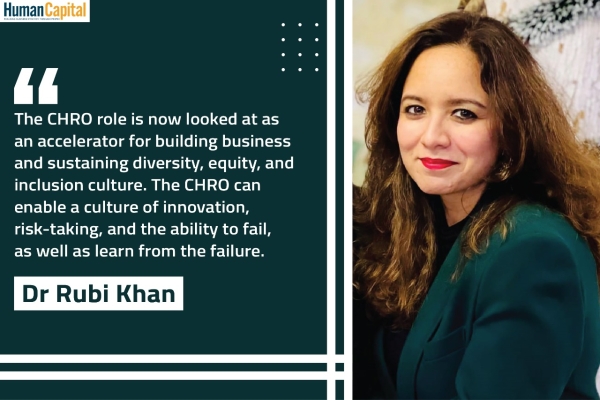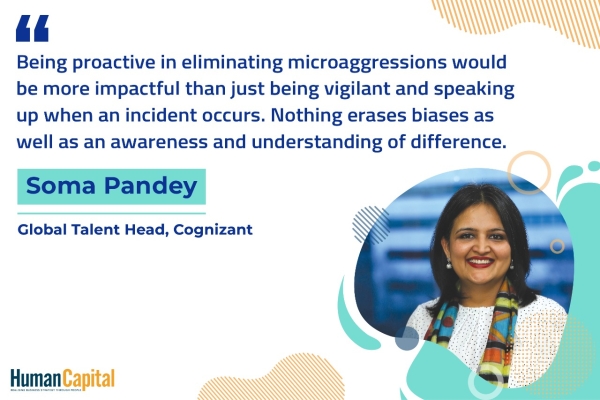
Driving Sucessful Strategic Change In Organisations
Our research tells us that less than half of transformations are successful, and, change management is one of the main components of a successful transformation programme. New technologies do not always adhere to their promises, existing customers are fixed with the old ways of doing things, and, new opportunities can appear to be – and often are – significantly less profitable than the existing business. Change is hard and very few organisations have managed to master it.
We know that the rate of change has increased exponentially. Windows of opportunity are opening and closing quickly. And, to be successful in the times ahead, it is essential for organisations to keep pace with these changes, and, be prepared for an agile and ever evolving organisational structure in order. Consider how much has changed. Social media sites such as Twitter and Facebook have become conventional ways to share news, express opinions, communicate political positions, and disclose fraud. Professional networking sites are now being integrated into formal communication channels. The competitive nature of the corporate world is a constant impetus for change, although in many cases, the need and the approach for change management needs to be clearly articulated. Companies strive to limit the negative impact that situational shifts may have on their employees, but such a task is not trivial.
In Quotes “Consider how much has changed. Social media sites such as Twitter and Facebook have become conventional ways to share news, express opinions, communicate political positions, and disclose fraud.”
Change management is now pivotal in this world of constant change and continuous transformations, which makes it important for organisations to lay keen emphasis and rely on data while undertaking a change journey. According to an article published in the HBR, companies best positioned to change in the next decade will be the ones that set themselves up well now, by collecting right kind of data and investing in their analytics capacity. The key to building predictive models is knowing what you want to predict, and, collecting large and diverse data sets that enable you to do so. Although, predictive models for change management are still nascent, organisations can choose the right path by adopting the right tools and capturing the right data.
Research by Bersin by Deloitte demonstrates that greater success across the board is achieved by companies with solid upfront business planning, as represented by a business case that is developed early on in the process. A business case is not considered to be part of the change management process; it generally precedes it as a prerequisite, especially with proposed large expenditures, such as with technology purchases, or, mergers and acquisitions. As many of these are also key steps in the change management process, you should leverage as much of this information as you can, early in the process, while identifying sources of data that need a deeper look.
Done right, effective change management:
1. Reduces the productivity gap that may occur as a result of changing how people do their jobs (and lead to a return on the investment sooner)
2. Reduces the risk of the effort failing and requiring significant additional costs to “fix it” after the fact
3. Reduces the risk of employee turnover due to stress / anxiety around the change
4. Reduces the likelihood of a disruption to the customer experience, or negative customer or media attention
5. Increases employee commitment to the change, resulting in increased engagement around making the initiative a success
HR organisations have recently come to embrace people analytics (PA). More than 85 percent of the companies surveyed for our latest High-Impact People Analytics study, have developed their PA capabilities beyond the most rudimentary level. But, nearly 70 percent of companies have not yet scaled those capabilities across the HR organisation. In most companies, where a core PA team exists, it is a centralized silo—a centre of excellence comprised of professionals from HR, data science, and social and behavioural science backgrounds. The problem lies here - isolation. When the PA capability is separated from the rest of the business, its applications are severely limited. The rich promise of PA lies in its ability to bolster employee engagement and productivity at a day-to-day level—and, in doing so, to deliver business results. Making good on that promise is the challenge faced by HR leaders.
Culminating and managing the right change initiative is key and change management comes with some essentials. Effective change management facilitates moving people from a current state to a future state, while minimizing disruption to the organisation and maximizing results. Here, we present seven critical components to create a positive change experience in any organisation with support from our research in Introduction to change management: A primer for HR professionals addressing organisational change, Bersin by Deloitte:
1. Compelling business case: The failure of change management often starts at the earliest stage- developing a strong business case for change. Only 48% of companies had a well‑understood business case at the beginning of a project.
2. Core stakeholder consensus: In advance of a change implementation project, leaders need to build consensus around the belief that change is required and important. Around 80% of organisations who created broad- based consensus upfront ranked projects as successful vs 41% of those who did not.
3. Executive champion: Our research says that when there was no identifiable executive champion, the project had a decreased chance for successful outcome. Identifying a successor champion is also an important practice as 21% of organisations reported that the original champion left before the project completion.
4. Dedicated change team: Dedicated, full time team members have a deep understanding of the business case for change, and a clear commitment to the project success. About 66% of companies reported understaffing and failure to backfill for staff “on loan” to the project as an obstacle to success.
5. Leadership alignment: The executive team should be aligned with the value proposition for the change and the definition of successful project outcomes. About 67% of those who created consensus at the onset of the project “agree” or “strongly agree” that this resulted in a self-reliant ownership culture.
6. Employee capabilities: It is critical that employees have the skill, resources, and structures to work effectively in the new environment. Research shows getting people with past experience of dealing with change processes to guide an existing team helps them navigate the change process better.
7. Communication Strategy: A well-defined communication strategy upfront, provides transparency around the status of the project. Effective communication will help build consensus among different stakeholders and address concerns of affected employees throughout the change process. About 16% of companies reported that communication breakdowns (due to a lack of strategy and structured plan) negatively affected the project and/or organisation.
It is important, however, to get over our change fatigue and learn about proven processes, making it essential that the HR function/organisation builds an agile mind-set and culture to endorse change, and ensure that people within the organisation are more open and susceptible to the changing environment. In addition to inculcating an agile culture within the organisation, HR must master the art of agility themselves, and hone and develop new talent and business capabilities to drive strategic change within organisations. Organisations need many more change leaders. Many more people behaving as leaders makes the difference between successful and failed change efforts.
Those who choose to participate in and lead change are far more likely to be successful than those whose participation is forced. Leaders exist at every organisational level, not just the C-suite; finding and empowering those leaders as your Change Champions is critical to success. It is also essential for leaders to model the change and the behaviours desired from the rest of the organisation, not just push the change upon others. Ensuring that robust and relentless project management and communications is maintained through the change initiative is also key to the success or failure of the change initiative.
IBM: A Case Study
Let us look at how some of these components can play a critical role in a change initiative or large-scale transformation project. Deloitte conducted a study on IBM successfully developing a set of their leaders to serve as Change Agents. IBM wanted to renew their focus on delivering a differentiated experience to their clients. The organisation leaders became crucial in this ask, so IBM set out to design leadership development initiatives that would help them address this business ask. One of the key differentiators IBM decided to adopt was the introduction of the Manager Champion Group. Through a well-defined communication programme, these Manager Champions would be a core sub set of the identified leaders selected for the various leadership development initiatives and they would become change agents for driving this programme. These individuals would role model and teach other programme nominees what it meant to be a successful leader in IBM, thereby making it more relatable to the other nominees to adopt the various learnings being driven through larger program.
Not only did the Manager Champions have a direct influence on Business Impact and help the larger pool of identified Changer Users adopt the change – the Champions continued to be highly involved and continued to support the change process even a year after the program officially ended. The IBM case highlights how the organisation successfully moved their leaders from a current state to the desired future state by adopting and thinking through the critical change components upfront and designing a programme that helped them make the change experience positive while being impactful for the organisation. Change in the corporate environment is going to get more complex and fast paced. HR organisations can however help the organisation plan and prepare to manage this change effectively by adopting the seven critical components mentioned earlier. Apart from positively impacting people who will manage and be affected by the change, these components will also assist the organisation in reaping positive benefits from the change – which would be the business rationale for the change in the first place.
In Quotes “HR organisations can however help the organisation plan and prepare to manage this change effectively by adopting the seven critical components mentioned earlier.”
Are you comfortable working with dispersed colleagues?
Trending
-
SBI General Insurance Launches Digital Health Campaign
-
CredR Rolls Out 'Life Happens' Leave For Its Employees
-
Meesho Announces 30-Week Gender-Neutral Parental Leave Policy
-
Microsoft Unveils Tech Resilience Curriculum To Foster An Inclusive Future
-
60% Indian Professionals Looking For Job Change Due To COVID: Survey
-
SpringPeople And Siemens Collaborate For Digital Transformation Push
-
86% Professionals Believe Hybrid Work Is Essential For Work Life Balance: Report
-
Almost 1 In Every 3 People's Personal Life Affected Due To Work Stress
-
Meesho Rolls Out Reset And Recharge Policy For Employees
-
80% Of Talent Leaders & Academics Say Pandemic Changed Skill Needs For Youth: Report
-
Hero Electric Rolls Out 'Hero Care' Program For Employees
-
Human Capital In Collaboration With ASSOCHAM Hosts Virtual Conference
-
IKEA India, Tata STRIVE Collaborate To Create Employability And Entrepreneurship Opportunities
-
SAP India, Microsoft Launch Tech Skilling Program for Young Women
-
DXC Technology, NASSCOM Collaborate For Employability Skills Program
-
Lenskart To Hire Over 2000 Employees Across India By 2022
-
Mindtree Launches Learn-and-Earn Program
-
Tata AIA Extends 'Raksha Ka Teeka' To Its Employees
-
Swadesh Behera Is The New CPO Of Titan
-
NetConnect Global Plans To Recruit 5000 Tech Professionals In India
-
Hubhopper Plans To Hire 60% Of Indian Podcasters By 2022
-
Corporate India Needs More Women In Leadership Roles: Report
-
Aon to Invest $30 Million and Create 10,000 Apprenticeships by 2030
-
Tech Mahindra Launches ‘Gift a Career’ Initiative for Upskilling of Youth
-
40% Women Prefer Flexible Working Options in Post-COVID World: Survey
-
3 out of 4 companies believe they can effectively hire employees virtually: Report
-
Vodafone , CGI and NASSCOM Foundation launch digital skills platform
-
Odisha: Bank, postal employees to deliver cash for elderly, differently-abled persons
-
Skill India launches AI-based digital platform for "Skilled Workforce"
-
Hiring activity declines 6.73% in first quarter: Survey
-
70% startups impacted by COVID-19 pandemic
-
Bajaj Allianz Life ropes in Santanu Banerjee as CHRO
-
Over 70 Percent MSMEs look at cutting jobs to sustain businesses
-
93 Per Cent employees stressed about returning to office post-lockdown
-
Johnson & Johnson India announces family benefits for same gender partners
-
Indian firms turning friendly towards working mothers
-
Welspun India names Rajendra Mehta as new CHRO
-
Wipro partners with NASSCOM to launch Future Skills platform



Human Capital is niche media organisation for HR and Corporate. Our aim is to create an outstanding user experience for all our clients, readers, employers and employees through inspiring, industry-leading content pieces in the form of case studies, analysis, expert reports, authored articles and blogs. We cover topics such as talent acquisition, learning and development, diversity and inclusion, leadership, compensation, recruitment and many more.
Subscribe Now











































Comment